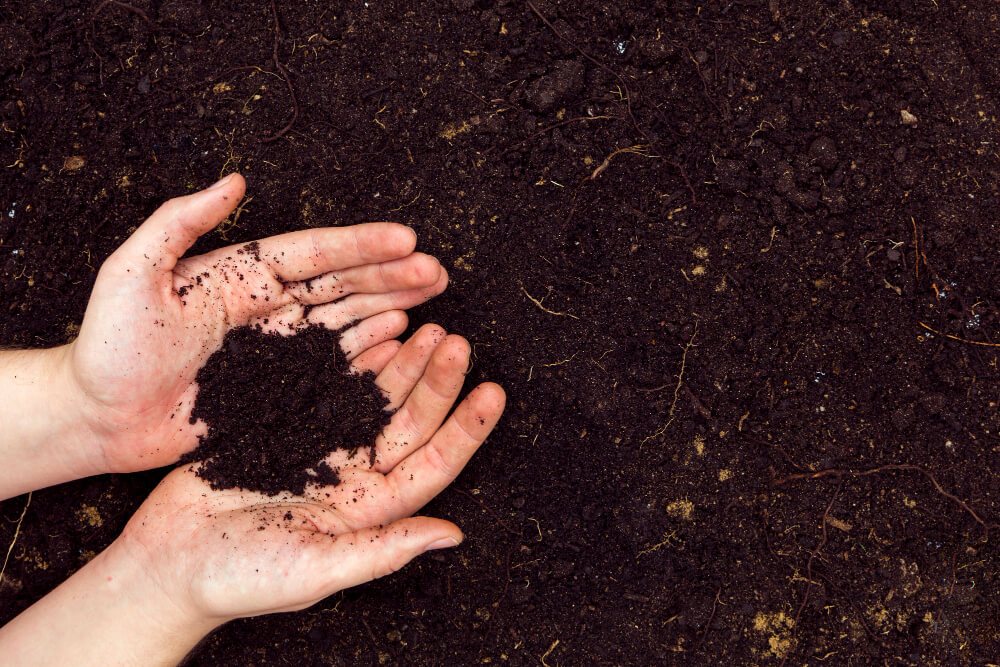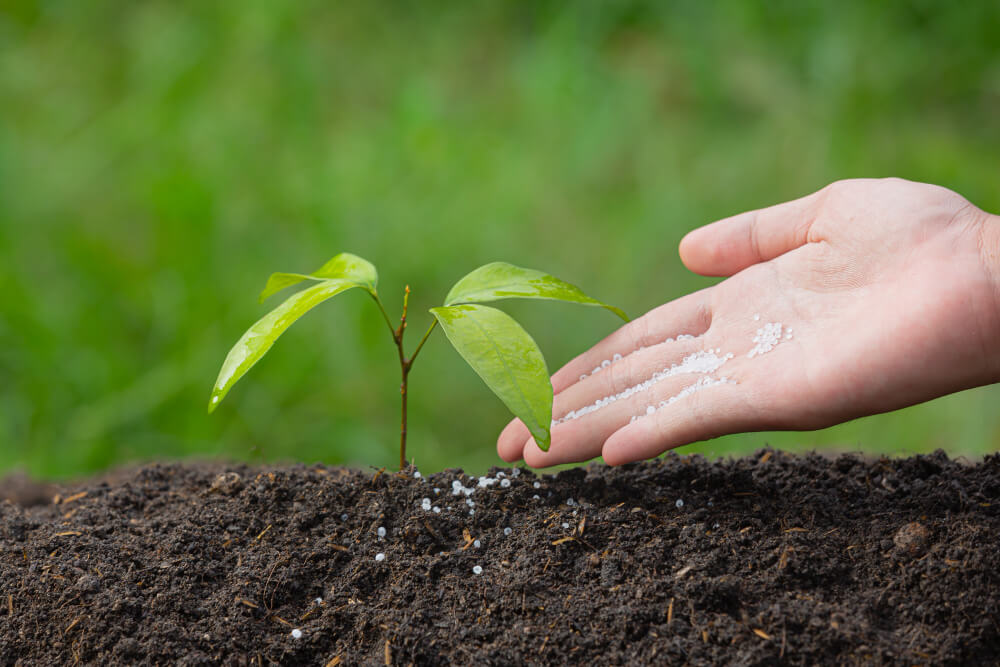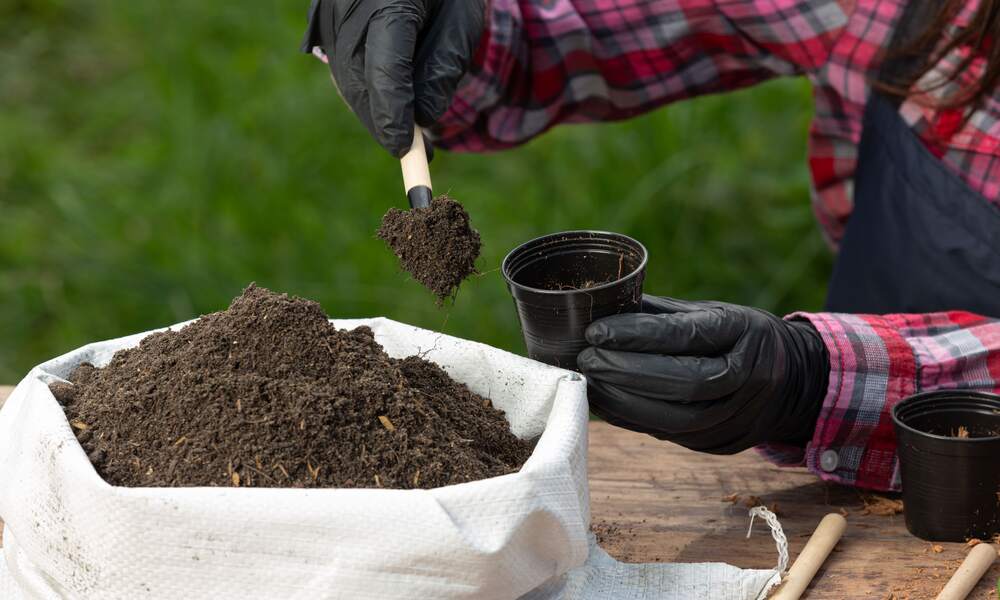In the world of agriculture and gardening, fertilizers play a pivotal role in enhancing plant growth and optimizing yield. One such fertilizer that has gained popularity for its balanced nutrient composition is the 13-13-13 fertilizer. In this comprehensive guide, we’ll delve into the specifics of what the 13-13-13 fertilizer is, its uses, benefits, important considerations, and more. Let’s explore the world of balanced fertilization!
Table of Contents
What is 13-13-13 Fertilizer?
13-13-13 fertilizer, often referred to as a “complete fertilizer,” contains equal parts of nitrogen, phosphorus, and potassium. This balanced composition makes it a versatile choice for various plants, including lawns.

Understanding the 13-13-13 Fertilizer
The 13-13-13 fertilizer, often referred to as a “balanced fertilizer,” is characterized by its equal content of three essential nutrients: nitrogen (N), phosphorus (P), and potassium (K). The numbers 13-13-13 represent the percentage by weight of each nutrient present in the fertilizer.
- Nitrogen (N) promotes lush foliage growth, enhances chlorophyll production, and aids in overall plant vigor.
- Phosphorus (P) is crucial for root development, flower formation, and fruiting. It plays a significant role in energy transfer within plants.
- Potassium (K) improves disease resistance, and stress tolerance, and supports various metabolic processes within plants.
Advantages of Using 13-13-13 Fertilizer
Versatile Application
The 13-13-13 fertilizer is suitable for a wide range of plants, making it an ideal choice for home gardens, landscapes, and agricultural fields.
Balanced Nutrition
The equal ratio of nutrients ensures that plants receive a well-rounded diet, promoting overall health and balanced growth.
Root Development
The phosphorus content aids in root system development, improving water and nutrient uptake, leading to stronger and healthier plants.
Flowering and Fruiting
Phosphorus and potassium contribute to improved flower and fruit formation, enhancing the aesthetic appeal and yield of plants.
Stress Tolerance
The potassium component enhances a plant’s ability to withstand environmental stressors, such as drought, disease, and extreme temperatures.
Disease Resistance
The balanced nutrient profile boosts a plant’s immune system, making it less susceptible to various diseases and pests.
Improved Soil Structure
Over time, the consistent use of balanced fertilizers can enhance soil structure and fertility, contributing to long-term soil health.
Reduced Nutrient Imbalance
Unlike single-nutrient fertilizers, the 13-13-13 formulation minimizes the risk of nutrient imbalances that could lead to nutrient deficiencies or toxicities.
Application Guidelines
Soil Testing
Before applying any fertilizer, including 13-13-13, it’s crucial to conduct a soil test to determine the specific nutrient needs of your plants and avoid over-application.
Timing Matters
Applying 13-13-13 fertilizer at the right time is crucial. Early spring and fall are generally recommended, as these periods support root growth and nutrient storage respectively.
Correct Application Technique
To ensure even distribution, apply the fertilizer using a spreader. Water your lawn afterward to help the nutrients penetrate the soil and reach the root zone.
Dosage Instructions
Follow the manufacturer’s instructions for the appropriate dosage. Applying too much fertilizer can lead to negative consequences, so it’s essential to stick to recommended guidelines.
Storage
Store fertilizers in a cool, dry place, away from children and pets, to prevent accidents and degradation of the product.
Potential Drawbacks to Consider
Risk of Over-Fertilization
Excessive use of 13-13-13 fertilizer can lead to over-fertilization, causing harm to your lawn and the environment. Always use the fertilizer in moderation and as directed.
Limited Micronutrients
While 13-13-13 fertilizer provides the essential N-P-K nutrients, it may lack certain micronutrients that are also important for optimal plant health. Consider supplementing with micronutrients if needed.
Making the Right Choice: 13-13-13 Fertilizer vs. Alternatives
Comparing 13-13-13 fertilizer with other options is essential to find the best fit for your lawn’s needs. Factors like nutrient requirements, soil type, and local climate should all be considered.
Shopping for 13-13-13 Fertilizer: Home Depot and Beyond
If you’re considering purchasing 13-13-13 fertilizer, major retailers like Home Depot often stock this popular option. Online garden supply stores can also provide a convenient shopping experience.
Exploring Price Points: How Much Does It Cost?
The cost of 13-13-13 fertilizer can vary based on brand, quantity, and location. On average, it falls within a moderate price range, making it a reasonably affordable choice for homeowners seeking quality results.
Where the 13-13-13 fertilizer is commonly used?
Home Gardens
In home gardens, the 13-13-13 fertilizer is often used to promote overall plant health and growth. It can be applied to a variety of plants, including flowering plants, vegetables, herbs, and ornamental shrubs. The balanced nutrient content helps ensure that plants receive the essential nutrients they need for robust foliage, blooming, and fruiting.
Lawn Care
For lawns, the 13-13-13 fertilizer can be applied to achieve uniform growth and vibrant green color. It helps in strengthening the grassroots and improving stress tolerance, making the lawn more resilient to foot traffic and varying weather conditions.
Fruit Trees
Fruit-bearing trees such as apple, pear, and peach trees benefit from the balanced nutrition provided by 13-13-13 fertilizer. This type of fertilizer supports the development of healthy roots, which in turn contribute to improved fruit production and quality.
Landscaping Plants
Landscaping plants, including hedges, bushes, and ornamental trees, can flourish with the application of 13-13-13 fertilizer. The balanced nutrients aid in maintaining consistent growth, lush foliage, and enhanced visual appeal.
Landscaping Plants
Landscaping plants, including hedges, bushes, and ornamental trees, can flourish with the application of 13-13-13 fertilizer. The balanced nutrients aid in maintaining consistent growth, lush foliage, and enhanced visual appeal.
Container Plants
Potted plants and container gardens can benefit from periodic applications of 13-13-13 fertilizer. Container plants rely on the nutrients within the limited soil volume, and the balanced composition helps prevent nutrient imbalances that can occur in confined spaces.
Agricultural Crops
In larger agricultural settings, the 13-13-13 fertilizer can be used on various crops such as maize, wheat, and soybeans. It’s particularly valuable when the nutrient needs of different crops need to be addressed simultaneously.
Greenhouse Plants
Plants grown in greenhouses, where nutrient availability can be carefully controlled, can thrive with the help of 13-13-13 fertilizer. Its balanced nutrient ratio provides the necessary elements for healthy growth in a controlled environment.
Nursery Seedlings
Young seedlings in nurseries require careful nutrition for healthy establishment. 13-13-13 fertilizer can provide the balanced nutrients needed for proper growth and development during their early stages.
Public Parks and Recreational Areas
Public parks, sports fields, and recreational areas often utilize 13-13-13 fertilizer to maintain well-maintained turf and ornamental plantings. This balanced fertilizer supports the high demand for visual appeal and durability.
Flower Beds and Borders
Flower beds and borders, whether in residential gardens or public spaces, can benefit from the use of 13-13-13 fertilizer to ensure lush foliage and abundant blooms.
Remember that while the 13-13-13 fertilizer is versatile, it’s important to consider the specific needs of the plants and the soil conditions in your area. Proper application rates and timing are key to achieving the best results and promoting healthy, thriving plants.
Conclusion
The 13-13-13 fertilizer stands as a versatile and well-balanced option for enhancing plant growth and yield across various settings. Its equal distribution of essential nutrients provides numerous benefits, from promoting root development to improving disease resistance. However, responsible use, including soil testing and adherence to application guidelines, is paramount to reap its rewards while minimizing negative impacts on the environment and plants alike.
As agriculture continues to evolve, the 13-13-13 fertilizer serves as a reliable tool for modern farmers and gardeners to foster healthy, thriving plants and contribute to sustainable cultivation practices.
FAQs
Can I use 13-13-13 fertilizer for all types of plants?
Yes, the balanced nutrient composition makes it suitable for various plants, but it’s essential to consider specific plant requirements and soil conditions.
How often should I apply 13-13-13 fertilizer?
The frequency of application depends on the plant’s growth stage and the soil’s nutrient content. Generally, once every 4-6 weeks during the growing season is recommended.
Is 13-13-13 suitable for organic gardening?
While 13-13-13 is a synthetic fertilizer, organic options with similar nutrient ratios are available for those practicing organic gardening.
Can I mix 13-13-13 with other fertilizers?
It’s generally best to avoid mixing fertilizers unless you have specific recommendations. Incorrect combinations could lead to nutrient imbalances.
Can over-application of 13-13-13 harm my plants?
Yes, excessive fertilizer use can lead to nutrient imbalances, burning of roots, and environmental pollution. Always follow recommended application rates.
What are some signs that I’m overusing 13-13-13 fertilizer?
Yellowing or browning of leaves, stunted growth, and excessive thatch buildup can indicate over-fertilization.
Can I apply 13-13-13 fertilizer during the summer months?
It’s better to avoid summer application, as high temperatures and water stress can lead to fertilizer burn. Stick to spring and fall.
How often should I apply 13-13-13 fertilizer to my lawn?
Application frequency depends on factors like soil quality, climate, and plant type. Generally, once or twice a year is sufficient.


